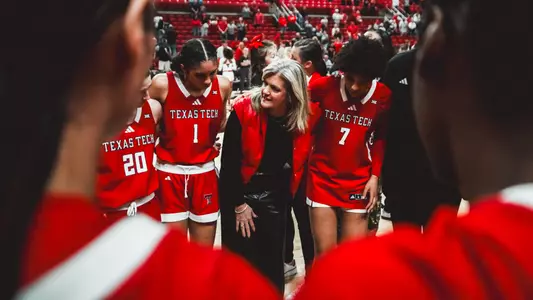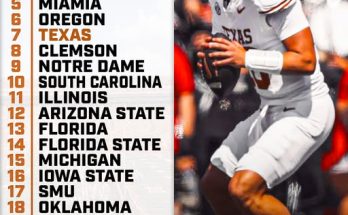The Texas Tech Red Raiders, a team known for their relentless grit and passionate fanbase, have found themselves on a world stage unlike any they’ve experienced before. In a historic moment for both the university and the nation, the Red Raiders were chosen to represent Team USA at the World University Games, an international multi-sport event that brings together student-athletes from across the globe. As they don the red, white, and blue, the Red Raiders aren’t just playing for West Texas anymore—they’re carrying the hopes of a country that has long been a breeding ground for elite collegiate talent.
The selection of a university team to represent the United States at an international competition is rare and significant. In the past, Team USA would often be a patchwork of collegiate stars from different programs, hastily assembled and tasked with competing under one banner. But this time, continuity and chemistry were prioritized. Texas Tech, with its seasoned coaching staff, tight-knit roster, and a reputation for player development and defensive intensity, emerged as the ideal candidate. The decision not only recognized the program’s rise in national relevance but also provided a unique opportunity for the players to showcase their talent on a global platform.
Preparing for international competition presents a different set of challenges. The rules are slightly different, the pace is more deliberate, and the competition more diverse. Texas Tech’s coaching staff, led by a no-nonsense tactician who has taken the program to new heights in recent years, had to quickly pivot from their regular NCAA preparation model to a more international style of play. Players had to adapt to FIBA regulations, including a 24-second shot clock, different lane dimensions, and more liberal goaltending rules. These changes forced the Red Raiders to refine their spacing, emphasize quicker decision-making, and develop a new level of physicality.
But if there’s one word that defines Texas Tech basketball, it’s “adjustment.” Over the years, this team has forged its identity through adversity. Whether it was deep tournament runs, heartbreaking losses, or grueling Big 12 slates, the Red Raiders have consistently found ways to adapt and excel. That same adaptability served them well as they entered the group stage of the World University Games. Facing teams from Europe, Asia, and Africa, each with distinct styles of play, the Red Raiders leaned heavily on their defense—a suffocating, switch-heavy system that left opponents frustrated and flustered.
The early stages of the tournament were a showcase for Texas Tech’s versatility. Their opening game saw them take on a well-drilled Lithuanian side that relied heavily on outside shooting and ball movement. The Red Raiders responded by closing out hard on shooters, jumping passing lanes, and using their athleticism to turn defense into offense. Transition buckets, sparked by blocks and steals, became the calling card of their campaign. Game by game, they began to build momentum, dispatching teams with increasing confidence.
The world began to take notice of players who, until now, were primarily known to college basketball diehards. One of the breakout stars was a sophomore guard whose court vision and scoring ability left commentators marveling at his poise under pressure. Another standout was a bruising forward, a defensive anchor who patrolled the paint like a sentry, altering shots and dominating the boards. The international spotlight revealed not just their skill but also their leadership, as they rallied their teammates in tight contests and led by example when the pressure was highest.
As the tournament advanced into the knockout stages, the intensity ratcheted up. Every possession mattered, and the margin for error shrank. In a semifinal thriller against a Serbian team packed with professional-level talent, Texas Tech was pushed to the brink. It was a game of runs, physical play, and emotionally charged moments. Late in the fourth quarter, with the score tied, the Red Raiders executed a near-flawless pick-and-roll sequence, leading to a game-winning three-pointer from the corner. The celebration was unrestrained, not just because of the victory, but because it represented the culmination of years of effort, discipline, and belief.
By the time the final rolled around, the Red Raiders had become fan favorites. Their hustle, camaraderie, and underdog mentality resonated with international audiences. The championship game pitted them against a powerhouse Australian squad known for its length and unselfish ball movement. The Red Raiders came in as underdogs once again, but they relished the role. From the opening tip, it was clear they wouldn’t be intimidated. They attacked the rim with fearlessness, contested every shot, and displayed a cohesiveness that only comes from years of playing together. It wasn’t just about skill—it was about heart.
In a game that swung back and forth, the Red Raiders showed remarkable composure. A crucial steal in the final minute, followed by two clutch free throws, sealed the victory and earned them the gold medal. As the final buzzer sounded, the players collapsed into each other’s arms, overcome by the magnitude of what they had achieved. For Texas Tech, this wasn’t just a win—it was a statement to the world about what American college basketball represents: teamwork, resilience, and an unyielding competitive spirit.
The aftermath of the tournament saw a wave of recognition descend upon the Red Raiders. Media outlets across the globe ran stories about their improbable run. Social media buzzed with clips of their suffocating defense, buzzer-beating threes, and fiery celebrations. Back in Lubbock, the victory sparked jubilation. Watch parties turned into spontaneous parades. The campus lit up with pride, and a new wave of recruits began to take notice. The Red Raiders weren’t just a good college team—they were champions on a global stage.
But perhaps the most lasting impact of the Red Raiders’ participation in the World University Games lies beyond the scoreboard. For the players, it was a cultural immersion—an opportunity to engage with athletes from different backgrounds, to trade stories and jerseys, and to grow as individuals. For the university, it was a moment of global outreach, a chance to showcase its commitment to excellence on and off the court. And for American college basketball, it was a powerful reminder of the depth and quality of talent that exists within its ranks.
As they return to campus with gold medals around their necks, the Red Raiders bring back more than hardware. They carry a renewed sense of purpose and a belief that anything is possible. The experiences, lessons, and memories forged in those intense weeks of competition will shape their outlook for seasons to come. Every practice will feel more meaningful, every game a chance to prove that their success wasn’t a fluke but the product of discipline, preparation, and unbreakable team chemistry.
The world saw a group of young men who didn’t just represent their university—they embodied a nation’s sporting spirit. They played for their coaches, their classmates, their families, and their country. And they won. That’s a legacy no scoreboard can measure.
Texas Tech may have traveled across the ocean as a college basketball team, but they returned as something more. Champions, yes—but also ambassadors of American grit, humility, and excellence. The world now knows what those in Lubbock have believed for years: when the Red Raiders take the court, they bring with them not just skill and hustle, but a fire that refuses to be extinguished.



